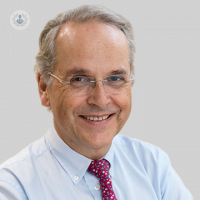How are varicose veins removed?
Written by:Varicose veins affect about one quarter of the population in Westernised countries. It is thought that both inherited factors and environmental factors cause varicose veins. A detailed search for inherited factors of genes associated with varicose veins has been made, but unfortunately no gene causing varicose veins has been identified in the research done so far.

What causes varicose veins in the legs?
Of the environmental factors, it is thought that what we eat is probably the most important thing that causes varicose veins. We tend to eat much more fruit sugar and much more fat than our ancestors would have done. It is also being found that people who stand up a lot for their occupation develop varicose veins more frequently.
How are varicose veins treated?
We recognise the two major different types of varicose veins, the large ones which are lumpy and bumpy veins, which are found at the back of the leg. These are often associated with symptoms of aching and swelling of the ankle. They may also cause bleeding and leg ulcers. We treat these by varicose vein surgery or by minimally invasive techniques in order to remove them.
There are also small varicose veins called thread veins. They appear as little pink and purple veins, which wiggle around in the skin. The main problem that these cause is an appearance problem. Many people think that the cosmetic appearance is unsatisfactory and they would like them removed. These are commonly associated with little blue veins which are sometimes the source of aching in the leg. We treat this type of vein with sclerotherapy, which is usually by far the most effective treatment. With both cases, it is readily possible to remove the varicose vein no matter how big or how small it is.
Varicose veins removal – how it’s done
The traditional way of treating varicose veins is by a stripping operation. That’s a general surgical operation under anaesthetic in an operating theatre. However, there’s been a major revolution in varicose vein treatment in recent years. In my practice, most of the varicose veins are now treated under local anaesthetic in my consulting room. No longer do we take out varicose veins but the veins are destroyed where they sit. Tubes are inserted into the legs through which catheters can be placed inside the veins. Then with local anaesthetic in place, we can heat the veins with either laser energy or electrical energy.
Ultrasound-guided foam sclerotherapy
Another way of treating varicose veins is to use ultrasound-guided foam sclerotherapy. This is an enhancement of conventional sclerotherapy, a very long established, traditional treatment wherein a substance is injected in the vein to destroy it. In foam sclerotherapy, the sclerosant we use is created into a foam and this is then directly injected into the vein under ultrasound guidance. The vein is immediately destroyed and then is gradually reabsorbed by the body.
A wide range of new treatments for varicose veins have been developed in the last 10 or 15 years. We always used to take out varicose veins in operation. Now, we treat the veins where they lie, destroying them either by heating them or destroying them as they stay in the leg. The body will then gradually reabsorb the destroyed veins after they’ve been treated.
All these treatments are done by local anaesthetic usually in the consulting room. We pass catheters inside the veins to be treated and use a heating energy from the laser or from an electrically heated catheter to destroy the veins. In foam sclerotherapy, we can inject a sclerosant foam into the vein which immediately and painlessly destroys the vein. Again, the vein is reabsorbed as soon as it is being treated. Although this process takes several months.


